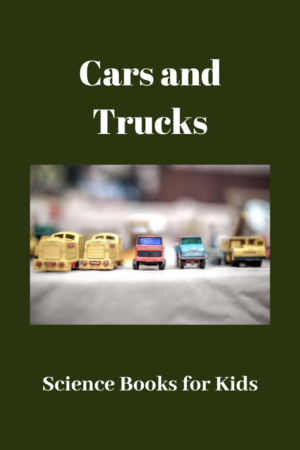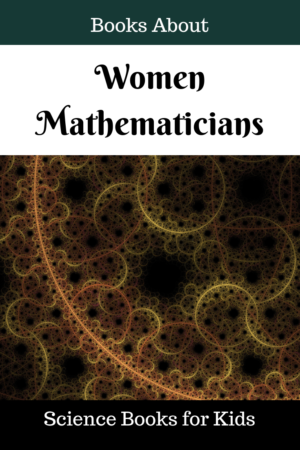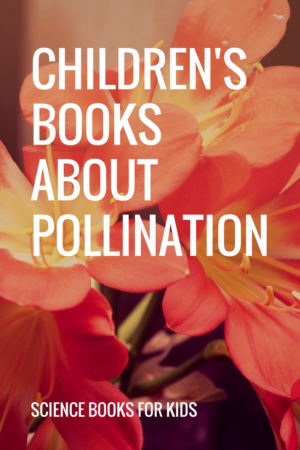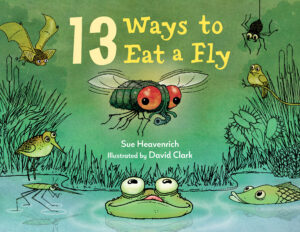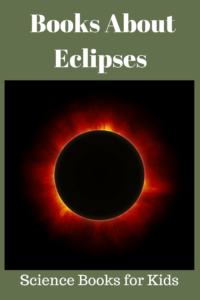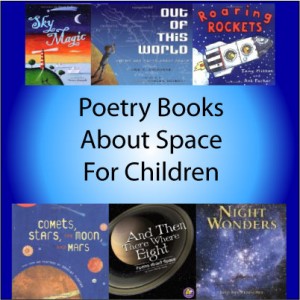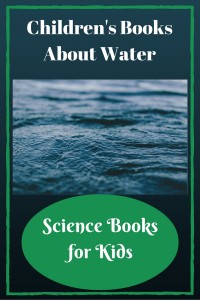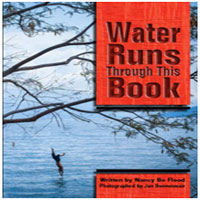If you are doing a science theme about planets or the solar system and are looking for books for children, you’ve come to the right place. (Note: Linked titles go to Amazon for more information. Please see the disclaimer below).
The titles are organized by genre and reading level.
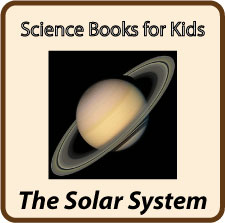
You might also be interested in:
Nonfiction
Beginning Readers- Informational Texts

Space (Smithsonian Little Explorer) by Martha E. H. Rustad is a quick introduction to topics ranging from the moon and planets to the Big Bang. Colorful photographs and eye-catching illustrations help keep interest and put things in perspective. See how many Earths placed on top of each other would equal the height of the sun. Fascinating!
by Martha E. H. Rustad is a quick introduction to topics ranging from the moon and planets to the Big Bang. Colorful photographs and eye-catching illustrations help keep interest and put things in perspective. See how many Earths placed on top of each other would equal the height of the sun. Fascinating!
Reading Level grades 1-2
Publisher: Capstone Press (November 1, 2013)
ISBN-10: 1476535515
ISBN-13: 978-1476535517

Comets (Heinemann First Library: the Night Sky and Other Amazing Sights in Space) by Nick Hunter explains how these bits of dust and ice orbit the sun in our solar system. Starting with ancient records of comets, Hunter describes some of the most famous comets and how they were discovered, He concludes with an activity using balls and a playing field to help children conceptualize the vastness of space.
by Nick Hunter explains how these bits of dust and ice orbit the sun in our solar system. Starting with ancient records of comets, Hunter describes some of the most famous comets and how they were discovered, He concludes with an activity using balls and a playing field to help children conceptualize the vastness of space.
Reading Level: Grades 1-3
Publisher: Heinemann (August 1, 2013)
ISBN-10: 1432975196
ISBN-13: 978-1432975197
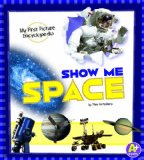
Show Me Space: My First Picture Encyclopedia (My First Picture Encyclopedias) by Steve Kortenkamp is a visually-stimulating way to learn about our sun, the planets, moons and even far away galaxies.
by Steve Kortenkamp is a visually-stimulating way to learn about our sun, the planets, moons and even far away galaxies.
Reading level: 1-2
Ages 4-8
Series: My First Picture Encyclopedias
Publisher: Capstone Press (February 1, 2013)
ISBN-10: 1620659220
ISBN-13: 978-1620659229
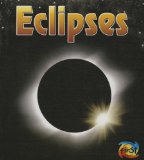
Eclipses (Heinemann First Library: The Night Sky: And Other Amazing Sights in Space) by Nick Hunter (Author) examines both solar and lunar eclipses, as well as eclipses on other planets. The book covers what an eclipse is, what eclipses can look like, how they happen, what people thought of eclipses in the past, and how they are studied today. He concludes with an activity, along with advice on viewing eclipses.
by Nick Hunter (Author) examines both solar and lunar eclipses, as well as eclipses on other planets. The book covers what an eclipse is, what eclipses can look like, how they happen, what people thought of eclipses in the past, and how they are studied today. He concludes with an activity, along with advice on viewing eclipses.
Reading Level: Grades 1-3
Publisher: Heinemann (August 1, 2013)
ISBN-10: 1432975153
ISBN-13: 978-1432975159

Northern Lights (Heinemann First Library) by Nick Hunter covers some of the coolest phenomena we can see without a telescope: the Aurora Borealis or Northern Lights. He explains what they are, what they look like, where they can be seen, and how they are caused. Readers also learn about the significance of solar storms, the Southern Lights, what people thought about auroras in the past, and how they are explored today. As with the others in this series, he concludes with a fun activity.
by Nick Hunter covers some of the coolest phenomena we can see without a telescope: the Aurora Borealis or Northern Lights. He explains what they are, what they look like, where they can be seen, and how they are caused. Readers also learn about the significance of solar storms, the Southern Lights, what people thought about auroras in the past, and how they are explored today. As with the others in this series, he concludes with a fun activity.
Reading level: Grades 1-3
Publisher: Heinemann (August 1, 2013)
Language: English
ISBN-10: 1432975161
ISBN-13: 978-1432975166
Picture Books
Nerdy Babies: Space by Emmy Kastner.


Follow the “Nerdy Baby” astronauts as they travel into space (floating), orbit around the sun, go back to the moon, then discover each of the planets in the solar system, with one significant fact noted about each.
The pacing, vocabulary, and information presented all work perfectly for preschoolers in the 4-5 year old range.
The only thing that was off-putting was that the author included the Nerdy Baby branding in the text. Preschoolers might not like to be called babies (or nerdy), so decide how you want to deal with that part.
Overall, Nerdy Babies: Space is a sweet, well-paced introduction to our solar system.
Series: Nerdy Babies
Publisher: Roaring Brook Press (May 7, 2019)
ISBN-10: 1250312051
ISBN-13: 978-1250312051


Mission to Mars by Mary Kay Carson
With interest in travel to Mars expanding, Carson makes a detailed comparison between Mars and the Earth while describing the history of Mars exploration, right up to the recent Mars rovers.
Age Range: 6 and up
Publisher: Sterling Children’s Books (February 6, 2018)
ISBN-10: 1454923512
ISBN-13: 978-1454923510


Exoplanets by Seymour Simon
What are exoplanets? Exoplanets are planets found outside our solar system. The first confirmed exoplanet was discovered in 1992, but many, many are now known.
Seymour Simon talks about his inspiration for the book in this video:
Age Range: 6 – 10 years
Publisher: HarperCollins (March 27, 2018)
ISBN-10: 0062470574
ISBN-13: 978-0062470577


Saturn Could Sail (Did You Know?) by Laura Lyn DiSiena and Hannah Eliot, with illustrations by Pete Oswald and Aaron Spurgeon
by Laura Lyn DiSiena and Hannah Eliot, with illustrations by Pete Oswald and Aaron Spurgeon
Do you know what the title Saturn Could Sail refers to? It turns out Saturn is less dense than water and could float in it if one could find a container of water large enough. Given our experience has mostly been with our own rocky planet, which is much denser than water, the fact a something as huge as a planet could float is very surprising to think about.
This books is full of the kind of thought-provoking facts that a certain type of child is going to soak up like a sponge and then bring up every chance he or she gets, usually prefaced with the words, “Did you know…?”
Age Range: 4 – 8 years
Publisher: Little Simon (December 16, 2014)
ISBN-10: 1481414283
ISBN-13: 978-1481414289
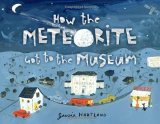
How the Meteorite Got to the Museum by Jessie Hartland
by Jessie Hartland
In her usual lightly humorous style Hartland reveals how a piece of the Peekskill meteorite ended up on display at the American Museum of Natural History. This book is the third in a series in which Hartland uses a cumulative story technique borrowed from “The House that Jack Built.” Here she explains where the meteorite came from, who saw it, and what the owner of the car did when she discovered the damage, etc.
Reviewed at Wrapped in Foil
Age Range: 6 – 9 years
Grade Level: 1 – 4
Hardcover: 40 pages
Publisher: Blue Apple Books (October 8, 2013)
ISBN-10: 1609052528
ISBN-13: 978-1609052522


Destined for Space: Our Story of Exploration (Smithsonian) by Don Nardo
by Don Nardo
Don Nardo is foremost a historian and he brings a historical perspective to the human exploration of space. Starting with the observations of the earliest humans, he gives a fast-paced overview of what we have learned and accomplished in our quest to figure out, “What’s out there?”
Ages: 7-11
Publisher: Capstone Press (January 1, 2012)
ISBN-10: 1429680245
ISBN-13: 978-1429680240


Pluto’s Secret: An Icy World’s Tale of Discovery by Margaret Weitekamp and David DeVorkin, illustrated by Diane Kidd
by Margaret Weitekamp and David DeVorkin, illustrated by Diane Kidd
With the the change in 2006 from having nine planets in the solar system to only eight, children may be wondering what happened to Pluto. Why isn’t it a planet any longer? Pluto’s Secret: An Icy World’s Tale of Discovery by Margaret Weitekamp, with David DeVorkin, and illustrated by Diane Kidd uses a whimsical approach to explain the discovery of Pluto, its history and how scientific classifications change as we uncover more information about the world around us.
by Margaret Weitekamp, with David DeVorkin, and illustrated by Diane Kidd uses a whimsical approach to explain the discovery of Pluto, its history and how scientific classifications change as we uncover more information about the world around us.
Reviewed at Growing with Science
Age Range: 5 – 9 years
Grade Level: Kindergarten – 4
Publisher: Harry N. Abrams (March 12, 2013)
ISBN-10: 1419704230
ISBN-13: 978-1419704239


13 Planets: The Latest View of the Solar System by David A. Aguilar
by David A. Aguilar
Explains the most recent view (2011) of the planets in our solar system, with eight planets in the classical sense and five dwarf planets.
Age Range: 8 – 12 years
Publisher: National Geographic Children’s Books (March 8, 2011)
ISBN-10: 1426307705
ISBN-13: 978-1426307706


National Geographic Kids First Big Book of Space  by Catherine D. Hughes and illustrated by David A. Aguilar
by Catherine D. Hughes and illustrated by David A. Aguilar
At 128 pages, this is a big book! Even though it exceeds the usual length, let’s keep it in the picture book section because of the fabulous illustrations and the reading age level.
Age Range: 4 – 8 years
Publisher: National Geographic Children’s Books (October 9, 2012)
ISBN-10: 1426310145
ISBN-13: 978-1426310140
Let’s-Read-and-Find-Out Science 2 has a whole series of titles about space and space exploration:


The International Space Station (Let’s-Read-and-Find-Out Science 2)
by Franklyn M. Branley and illustrated by True Kelley
Age Range: 4 – 8 years
Publisher: HarperCollins (September 19, 2000)
ISBN-10: 0064452093
ISBN-13: 978-0064452090


Mission to Mars (Let’s-Read-and-Find-Out Science 2)
by Franklyn M. Branley and illustrated by True Kelley
Explores the premise that someday people may visit, and even live on, Mars.
Age Range: 4 – 8 years
Publisher: HarperCollins (September 3, 2002)
ISBN-10: 0064452336
ISBN-13: 978-0064452335
Middle Grade
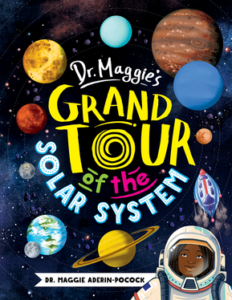
Dr. Maggie’s Grand Tour
of the Solar System by Dr. Maggie Aderin-Pocock
and illustrated by Chelen Écija
Space scientist Dr. Maggie guides the reader around our solar system, supported by incredible visual elements. What’s best about this book is that readers can read in order for a clear, logical progression or they can browse sections for specific topics of interest. The sidebars also break the text into delicious readable chunks.
Dr. Maggie’s Grand Tour
of the Solar System will enthrall budding astronomers and astronauts alike. Pick up a copy for the ride of your life.
Ages: 8+
ISBN: 978-1-68464-034-8


The Mighty Mars Rovers: The Incredible Adventures of Spirit and Opportunity (Scientists in the Field Series) by Elizabeth Rusch
by Elizabeth Rusch
As with other in the excellent Scientists in the Field series, The Mighty Mars Rovers focuses on the work of Steven Squyres, professor of astronomy at Cornell University and lead scientist on the mission.
Age Range: 10 and up
Publisher: HMH Books for Young Readers (June 19, 2012)
ISBN-10: 054747881X
ISBN-13: 978-0547478814


Cars on Mars: Roving the Red Planet by Alexandra Siy
by Alexandra Siy
Follow the twin rovers, Spirit and Opportunity, as they explore Mars. Learn how scientists determined that there was once water on Mars and how the NASA team resolved problems with the rovers from afar in order to prolong the mission.
Age Range: 8 – 12 years
Publisher: Charlesbridge; New edition (July 1, 2009)
ISBN-10: 1570914621
ISBN-13: 978-1570914621


Planet Hunter: Geoff Marcy and the Search for Other Earths
by Vicki Oransky Wittenstein
Have you ever wanted to visit the laboratory of a ground-breaking research scientist? Now you can, because Planet Hunter: Geoff Marcy and the Search for Other Earths by Vicki Oransky Wittenstein will allow you to feel like you are standing right next to Dr. Geoff Marcy in his quest to find extrasolar planets (planets that revolve around stars other than our sun).
Full review at Wrapped in Foil
Related activities at Growing with Science
Age Range: 10 – 14 years
Publisher: Boyds Mills Press (March 1, 2010)
ISBN-10: 1590785924
ISBN-13: 978-1590785928


Is There Life on Other Planets?: And Other Questions About Space (Is That a Fact?)
by Gregory L. Vogt and illustrated by Colin W. Thompson
Another in the Is That a Fact? series, this one investigates some silly myths as well as serious, such as, “Is the moon made of green cheese? and “Do astronauts wear diapers?”
Reading level: Ages 9-12
Library Binding: 40 pages
Publisher: Lerner Publications (March 2010)
ISBN-10: 0822590824
ISBN-13: 978-0822590828


Spacecraft (Machines Close-Up) by Daniel Gilpin and illustrated by Alex Pang
by Daniel Gilpin and illustrated by Alex Pang
Full color cut-away illustrations show the ins and outs of space vehicles past, present and future.
Reading level: Ages 9-12
Publisher: Benchmark Books; 1 edition (September 2010)
ISBN-10: 1608701123
ISBN-13: 978-1608701124

Fiction


You Are the First Kid on Mars by Patrick O’Brien
by Patrick O’Brien
Illustrator/author O’Brien takes the reader on an imaginary trip to a colony on Mars in the future. Scientific details and photorealistic illustrations, as well as second person narration, draw the reader into the story. It is not 100% accurate, but is a 100% thrilling ride.
Age Range: 5 and up
Grade Level: Kindergarten and up
Hardcover: 32 pages
Publisher: Putnam Juvenile (May 14, 2009)
Language: English
ISBN-10: 0399246347
ISBN-13: 978-0399246340
Related activity: Exploring Space Without a Spacesuit.
Disclaimer: Just so you know, I am an affiliate with Amazon. If you make a purchase after clicking on one of the title links, I will receive a small commission at no extra charge to you, the proceeds of which will help pay for maintaining this website.
Can you tell we’re Sue Fliess fans around here? This book has deeper text and is for a bit older readers than the ones above, but still features lively rhymes and a lot of action words.

